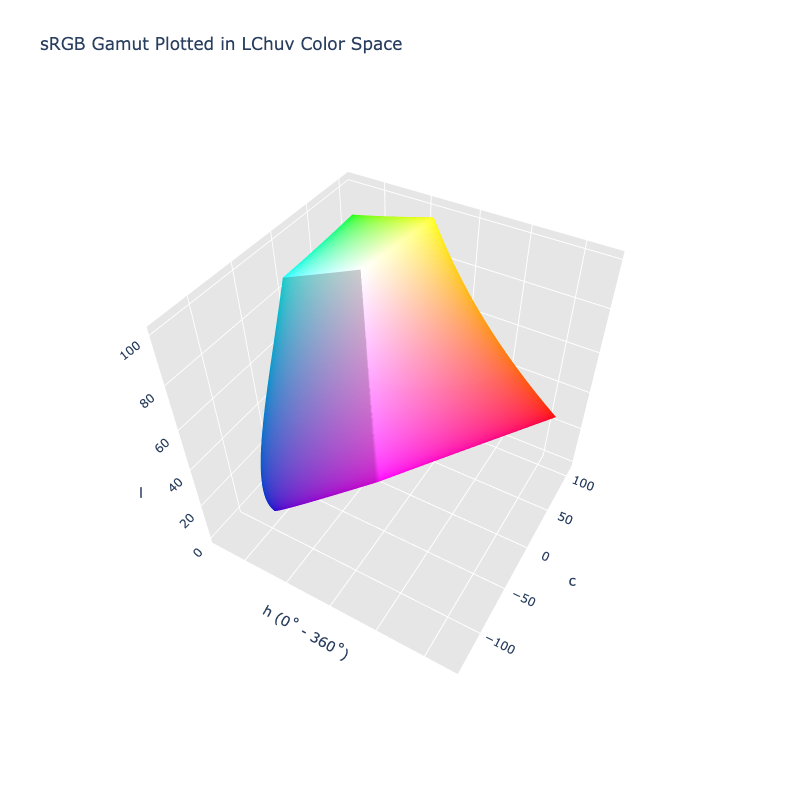LChuv
The LCHuv color space is not registered in Color by default
Properties
Name: lchuv
White Point: D65 / 2˚
Coordinates:
| Name | Range* |
|---|---|
l | [0, 100] |
c | [0, 220] |
h | [0, 360) |
* Space is not bound to the range and is only used as a reference to define percentage inputs/outputs in relation to the Display P3 color space.

The sRGB gamut represented within the CIELChuv color space.
CIELuv is not an intuitive space to work with directly and instead is often converted to cylindrical coordinates with hues represented as degrees and a chroma and lightness channel. The shape of the color space doesn't really change, just how the colors are manipulated.
Channel Aliases
| Channels | Aliases |
|---|---|
l | lightness |
c | chroma |
h | hue |
Input/Output
As CIELChuv is not currently supported in the CSS spec, the parsed input and string output formats use the color() function format using the custom name --lchuv:
color(--lchuv l c h / a) // Color function
When manually creating a color via raw data or specifying a color space as a parameter in a function, the color space name is always used:
Color("lchuv", [0, 0, 0], 1)
The string representation of the color object and the default string output use the color(--lchuv l c h / a) form.
>>> Color("lchuv", [53.237, 179.04, 12.177])
color(--lchuv 53.237 179.04 12.177 / 1)
>>> Color("lchuv", [74.934, 105.26, 44.683]).to_string()
'color(--lchuv 74.934 105.26 44.683)'
Registering
from coloraide import Color as Base
from coloraide.spaces.lchuv import LChuv
class Color(Base): ...
Color.register(LChuv())